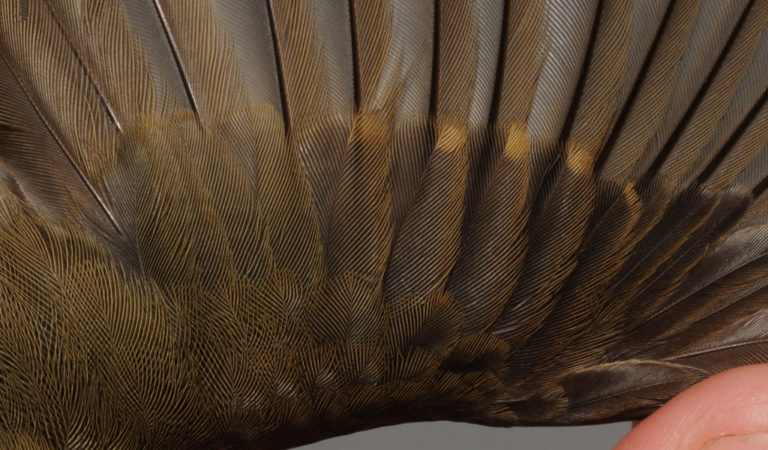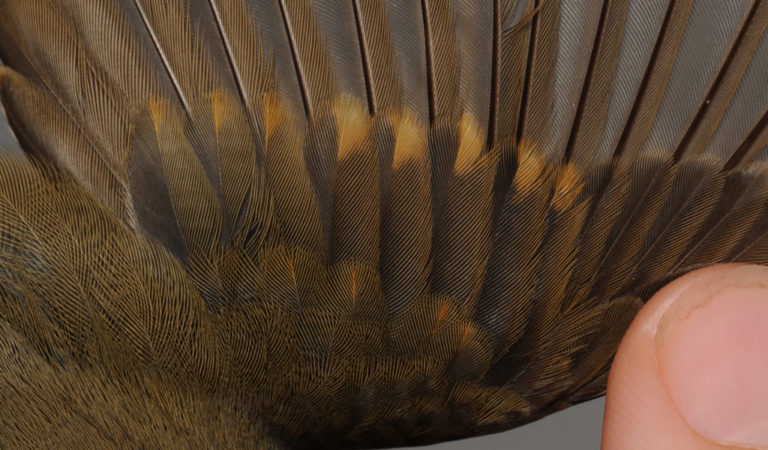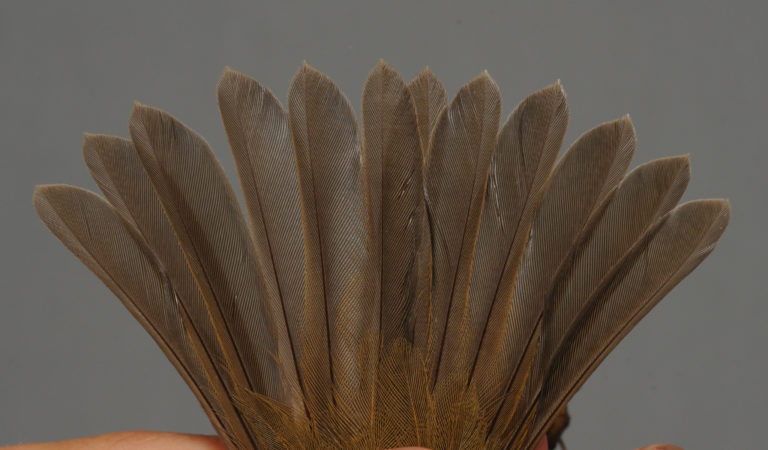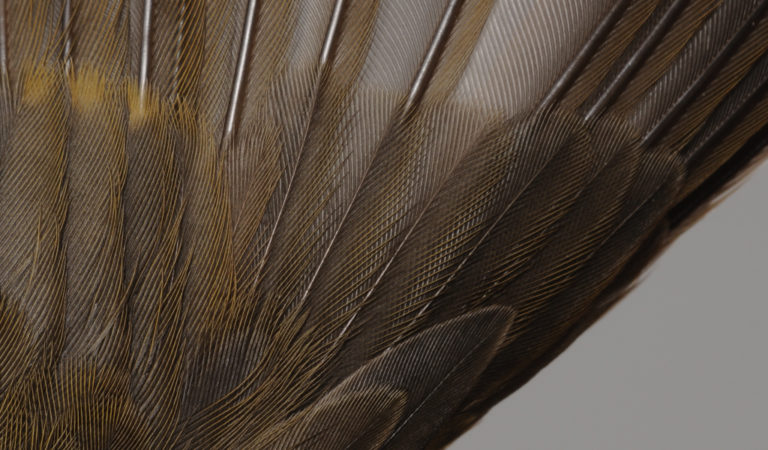

European Robin
AGE – BEST CRITERIA:

1 cy September. GC1-5 are juvenile with a slight rusty hue and rather large pale rusty-buff tip, contrasting to post-juvenile inner GC6-10 which are more dense, slightly more olive tinged (less rusty) and lacking pale tips. Note that juvenile GC also show a slight contrast to the post-juvenile MC. [CS04357]

1 cy September. Another individual showing juvenile GC1-5 in contrast to post-juvenile GC6-10. Note that this bird shows pale tips also to the post-juvenile GC. Compared to the tips of the juvenile feathers, they are smaller, narrower and have a darker rusty colour than in the juvenile GC. [CP47918]

1cy September. Juvenile RR are generally slightly more narrow and more pointed than in adult, but there is a variation in shape and difficult birds are sometimes seen. The structure is often helpful: less dense, less glossy and somewhat paler brownish than post-juvenile (or post-breeding) feathers. Most birds include no RR in the post-juvenile moult, but occasionally the central R1 may be included. [CP47918]

2cy+ October. Adult PC are slightly more dense, crisp fresh and slightly more olive. Whole wing is uniform post-breeding. [CP41627]

2cy+ October. Rather difficult PC, but proven as adult by the presence of a retained/forgotten innermost PC. This feather is now >1 year old, heavily worn and bleached. Theoretically, if this feather could be specified as juvenile, the bird would be a 2cy autumn (and conversely, if the feather is a post-breeding one, the bird would be 3cy+). However, such assessment is indeed very difficult and risky. [CV52619]
More Erithacus rubecula:
Ringers’ DigiGuide is sponsored by: